Therapy Tools
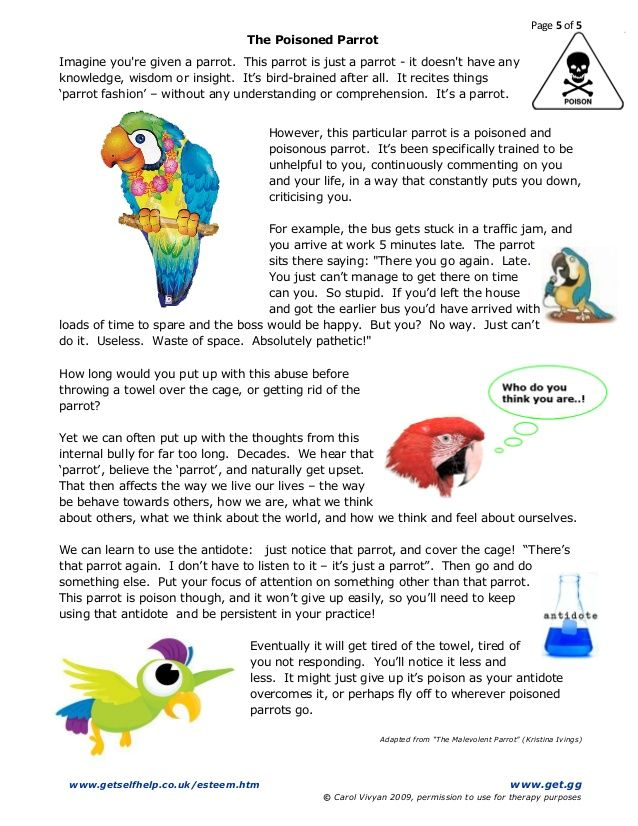 The Poisoned Parrot This is a metaphor applied to define the critical voice and self-criticism that come into someone’s mind. This is also referred to as negative self-talk or narrative. It is very hard to ignore it and it’s always there whenever you make a mistake, something bad happens, or if you receive a compliment, minimizing your success and making you feel low and doubtful about yourself. (Credit:www.getselfhelp.co.uk) |
|---|
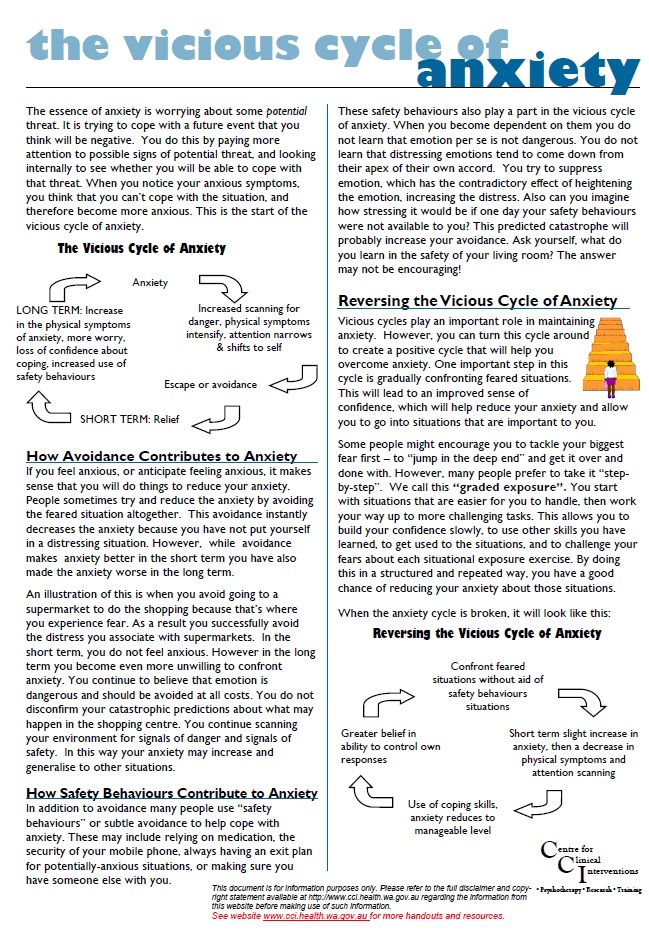 The vicious cycle of anxiety This short description and explanation discuss the cycle of anxiety, safety behaviours and avoidance, and also, how to reverse the cycle. (Credit:www.getselfhelp.co.uk) |
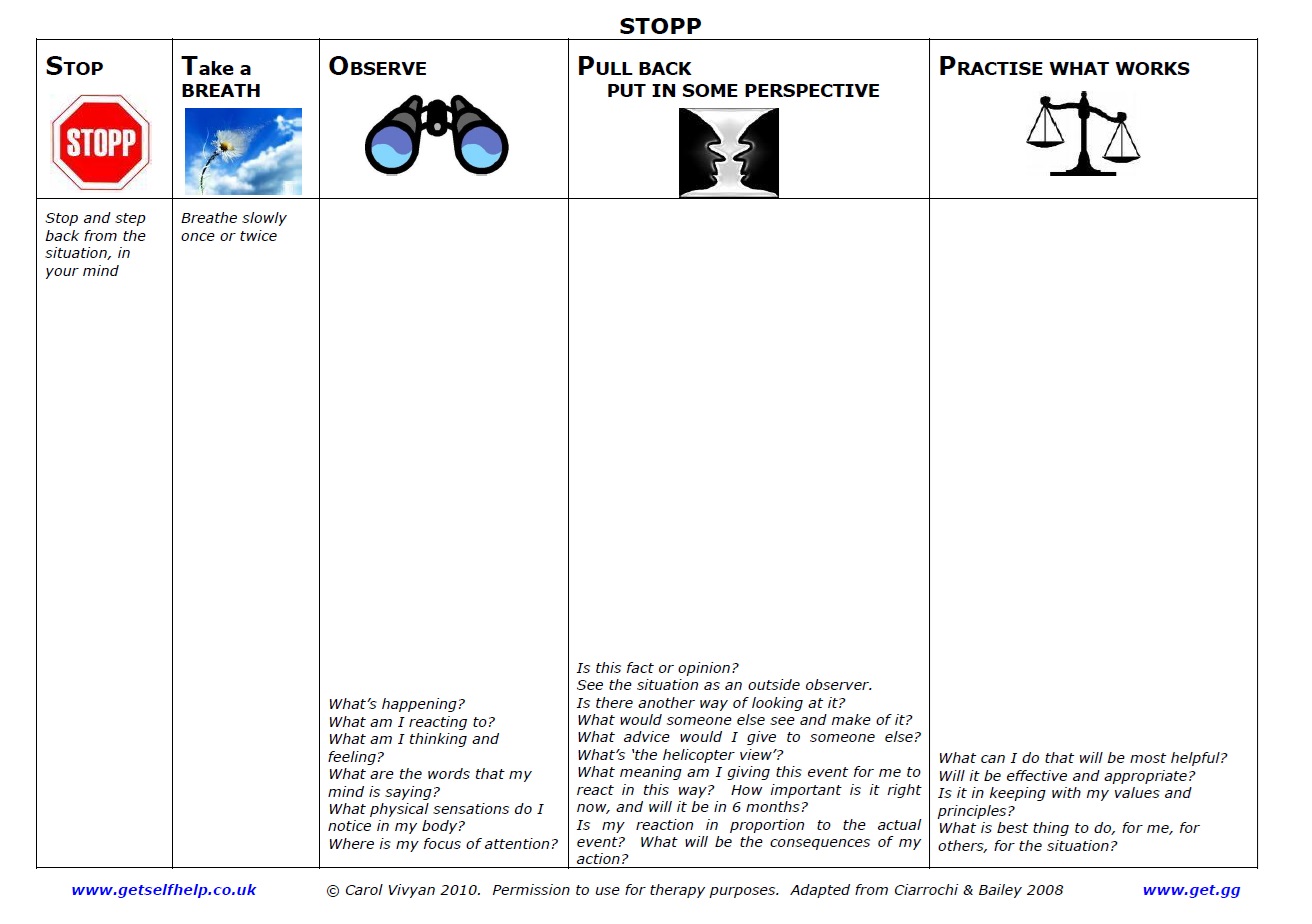 STOPP5 The STOPP technique is a simple yet powerful five-step exercise designed to help you manage current stress, anxiety, or intense emotions in the here and now (look at the picture/link). It provides a valuable pause between a triggering situation and your automatic reaction, allowing you to choose a more helpful response. Think of it as creating a vital space for reflection and control when you're feeling overwhelmed. By regularly practicing STOPP, even for small upsets, you can develop a powerful skill for emotional regulation and become more resilient in the face of life's challenges. (Credit:www.getselfhelp.co.uk) |
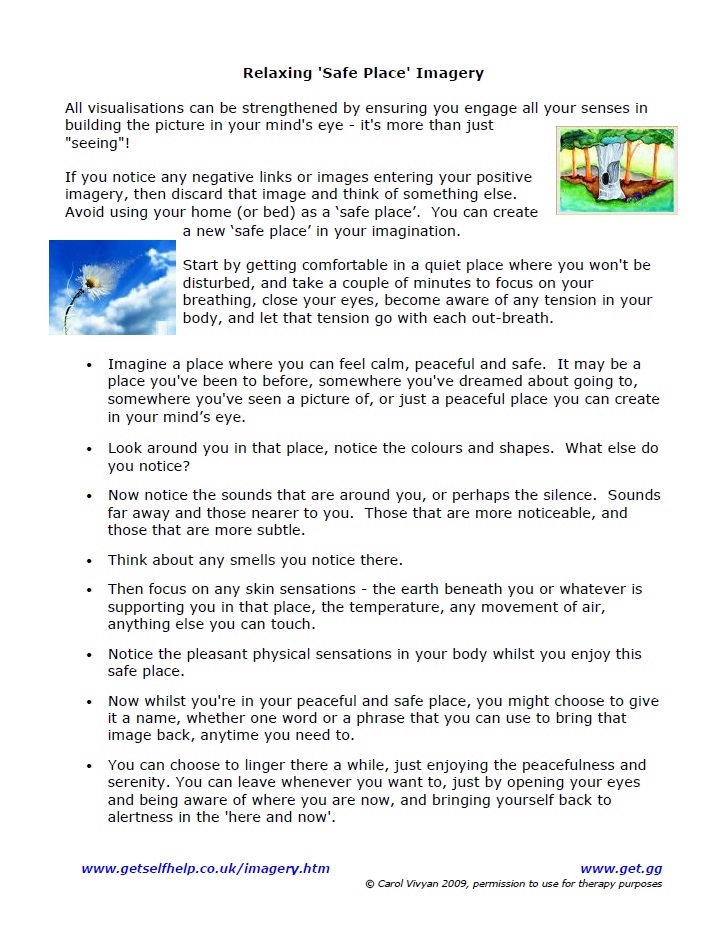 Creating an imaginary safe place Safe place is a visualisation tool which can help you feel calmer. This can be helpful for people who experience an ‘active brain’ which creates negative scenarios, struggles with rumination and catastrophisation. With this exercise, you can create your own safe place. (Credit:www.getselfhelp.co.uk) |
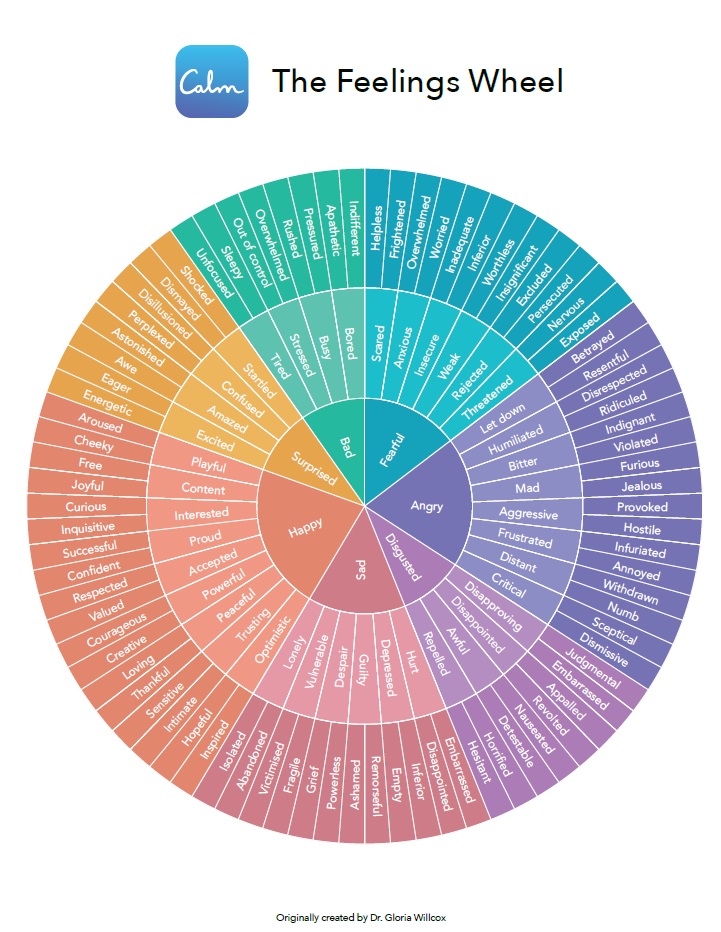 Feelings wheel The feelings wheel is a tool which provides an approach to identifying and understanding emotions. The innermost circle of the wheel includes the core emotions we have such as joy, anger, fear and sadness. The circle outside of it shows the secondary emotions and it stems from the core emotions. The last circle is called tertiary emotions and it’s the outmost layer. These are detailed emotions. (credit:www.calm.com) |
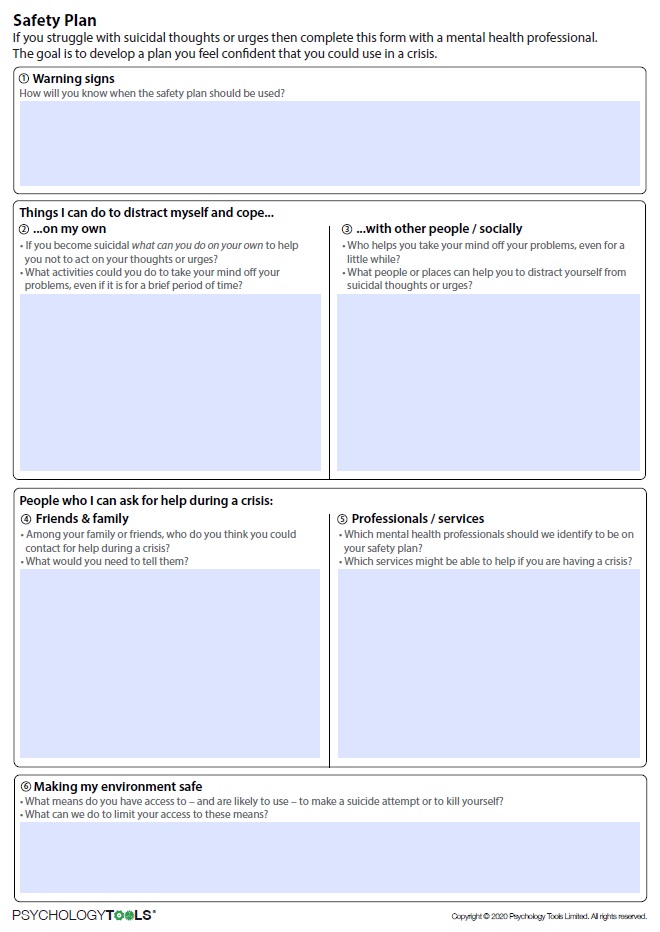 Safety Plan If you feel suicidal or very low, having a safety plan can be very helpful. Ideally, you created one before you feel really low, so you have something to navigate you through difficult times. Safety plan includes people you can turn to (i.e.: professionals/services, family/friends), your normal coping mechanisms, activities you can do/enjoy, activities that help you to be distracted. It can be completed on your own or with the help of a professional. (credit:www.psychologytools.com) |
| Self-Care Self-care is a highly individual practice, yet it's absolutely essential for maintaining your well-being on a daily basis. It acts as a crucial preventative measure, helping you avoid burnout and ensuring you look after yourself in the best way possible. Often, self-care is neglected, but understanding what genuinely helps and relaxes you is incredibly beneficial. It can take many forms: social activities with others, physical activities such as sport or exercise, engaging with your hobbies and interest, or slowing down such as practising breathwork, meditation. |
| Journaling Journaling is a powerful tool for self-reflection, ideally done by hand rather than typing. You can incorporate it into your routine daily, or whenever it feels right for you—perhaps to start your day with intention or wind down in the evening. It's more than just a record of daily events; journaling encourages you to delve into your feelings, thoughts, and experiences. This practice can help you gain a deeper understanding of yourself and your emotional landscape. It's also an excellent way to process daily events, like moments of stress or anxiety, helping you identify what caused them and how you truly feel. If you prefer a more structured approach, many different journal prompts are available. These can focus on various topics, such as relationships, career, or self-reflection, and we can explore some together if you like. |
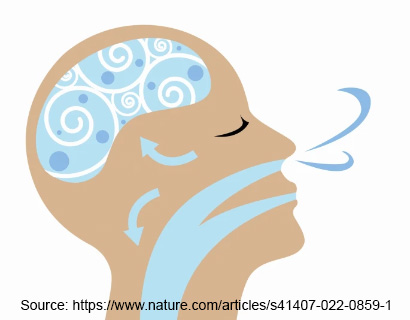 Breathwork Breathwork, particularly techniques like box breathing, can be incredibly helpful for managing your mental and physical state. These practices are excellent tools for both starting your day with a sense of calm and winding down in the evening. The purpose of techniques like box breathing is to: Calm your nervous system, manage anxiety and stress, Lower blood pressure (regular practice can contribute to a reduction in blood pressure), regulate stress hormones (It helps to lower the levels of stress hormones in your body). Here's a link to a box breathing exercise for you to try: Click here |
| Drama triangle The Drama Triangle describes a common pattern of unhelpful and often unconscious interactions in relationships. It involves three distinct roles: The Victim: Feels powerless, helpless, and unable to solve their own problems. They often say "Poor me!" and seek a Rescuer. The Rescuer: Steps in to "help" the Victim, often doing things for them rather than empowering them. They may neglect their own needs and often feel needed to feel valuable. The Persecutor: Blames, criticises, and controls, often taking an "It's all your fault!" stance. They can feel superior and may punish the Victim or Rescuer. We can all find ourselves, and others, taking on these roles from time to time. The dynamic nature of the triangle means that we often switch roles, sometimes even within the same conversation or argument. This cycle is called a "drama triangle" because it tends to perpetuate conflict and prevent genuine problem-solving or healthy connection. Instead of taking personal responsibility, individuals get stuck in a repetitive and often frustrating loop. Understanding these roles can help us identify when we're in the triangle and choose healthier ways to interact. |
| The 5-4-3-2-1 Grounding Technique The 5-4-3-2-1 grounding technique is a simple yet powerful tool to help you re-centre yourself in the present moment. It's particularly useful when you're feeling overwhelmed, anxious, stressed, or experiencing intense emotions. By engaging your five senses, it helps to pull your focus away from distressing thoughts or feelings and anchor you in your immediate surroundings. This technique works by redirecting your attention from internal distress to external, concrete sensory input, helping to calm your nervous system and bring you back to the "here and now. To practice it, you look around: 5 thing you can see (e.g., objects), 4 things you can feel (e.g., the chair beneath you), 3 things you can hear (e.g., distant traffic), 2 things you can smell (e.g., scent of coffee), 1 thing you can taste (e.g., the water you just drank). |